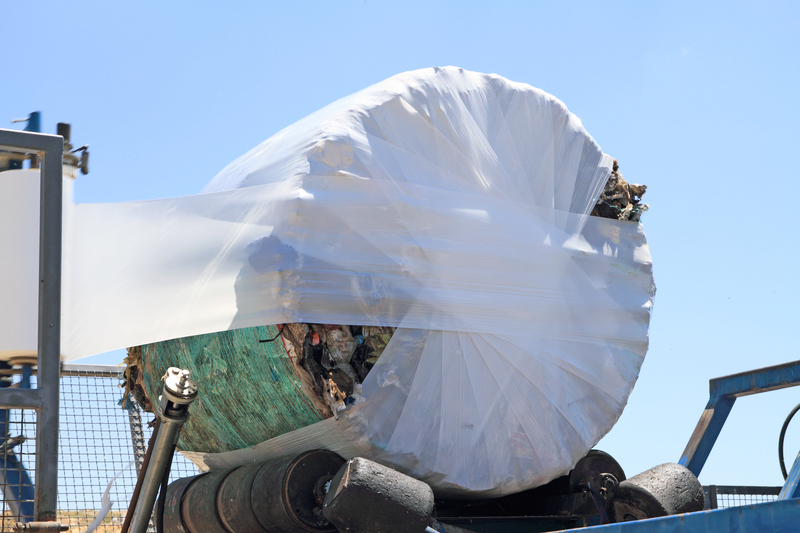Why Responsible PPE Waste Disposal Matters More Than Ever
The world has rapidly adapted to new health and safety protocols in recent years, with Personal Protective Equipment (PPE) such as masks, gloves, and gowns becoming essentials in our daily lives. However, the sudden surge in PPE usage, especially during the COVID-19 pandemic, has led to a new environmental challenge: how to dispose of PPE waste responsibly. In this comprehensive guide, we delve into why responsible PPE waste disposal matters more than ever--for the protection of both human health and our planet's ecosystems.

The Surge of PPE Waste: An Unforeseen Ecological Challenge
The primary use of Personal Protective Equipment (PPE) is to protect frontline workers and the public from infections and hazardous materials. However, the massive increase in production and consumption of PPE since 2020 has created a parallel crisis: unprecedented volumes of single-use PPE waste.
Statistics Highlighting the Growth of PPE Waste
- Globally, more than 129 billion face masks and 65 billion gloves were used monthly during the COVID-19 pandemic.
- Hospitals and healthcare facilities saw PPE waste volumes increase by up to 300% in certain regions.
- Studies estimate that discarded masks and gloves now make up a significant portion of urban and ocean litter.
It is clear that the responsible disposal of PPE waste is now a matter of urgency, not just for waste management agencies, but for society as a whole.
Environmental Impacts of Improper PPE Waste Disposal
Improper PPE waste management has profound and long-term effects on the environment:
- Microplastic Pollution: Most PPE, such as disposable masks and gloves, are made from polymers like polypropylene, which take hundreds of years to degrade. Over time, they break down into microplastics, contaminating soil and water bodies.
- Threats to Marine Life: Improperly discarded PPE often ends up in rivers and oceans where marine life may ingest them or become entangled, leading to injury or death.
- Land and Water Contamination: Chemicals and pathogens from used PPE can leach into the environment, risking soil and groundwater pollution.
- Visual Pollution: Littered masks and gloves are increasingly common sights in cities and nature, impacting natural beauty and tourism.
Case Study: PPE Pollution Impact in Asia
For example, in Southeast Asia, environmental groups have reported a significant rise in the presence of single-use masks and gloves amongst ocean debris. Mangrove forests--critical habitats for wildlife--are seeing increasing amounts of PPE entangled in their roots, threatening these vital ecosystems.
Public Health Risks of Mishandled PPE Waste
Responsible PPE waste management is not just about protecting the environment--it is also crucial for safeguarding public health:
- Transmission of Pathogens: Used PPE may harbor viruses, bacteria, and other contaminants which can spread to waste handlers or the general public if not disposed of correctly.
- Healthcare Facility Risks: Incorrect disposal practices within hospitals can increase the risk of hospital-acquired infections among staff and patients.
- Waste Picker Exposure: In many developing countries, informal waste pickers sort through household waste without adequate protection, exposing them to biohazardous PPE material.
Clearly, safe and responsible PPE waste disposal is a critical component of public health strategy, especially during infectious disease outbreaks.
The Importance of Educating the Public
Many people are unaware of the correct methods of disposing of used masks, gloves, and other protective gear. Education campaigns are essential to bridge this knowledge gap and prevent accidental environmental contamination or health risks.
- Clear labeling: Instructions and symbols on PPE packaging can guide users towards proper disposal methods.
- Awareness campaigns: Community outreach, social media posts, and in-school programs can reinforce the significance of responsible disposal.
- Signage in public spaces: Reminders in parks, transport hubs, and workplaces encourage correct behavior on the go.
By investing in public education, governments and organizations can promote environmental stewardship and reduce the negative impacts of PPE waste.
Practical Guidance for Individuals
- Never litter PPE: Always place used items in a sealed garbage bag before putting them in the general waste bin.
- Avoid recycling contaminated PPE: Most curbside recycling programs do not accept soiled or single-use PPE due to contamination risk.
- Follow local guidelines: Some communities offer dedicated disposal bins--use them when available.
Best Practices in PPE Waste Disposal
For Households and the General Public
- Double-bagging: Place used PPE in a plastic bag, seal it, then put it inside another bag before disposal.
- Never flush masks or gloves: These items can clog sewage systems and contribute to marine pollution.
- Shred or cut up masks: Cutting the ear loops on masks can prevent wildlife from becoming entangled if the masks reach nature.
For Healthcare and Industrial Facilities
- Use color-coded bins: Designate separate containers for PPE waste that are clearly marked as hazardous.
- Implement strict protocols: Train staff in proper handling, segregation, and disinfecting of PPE waste.
- Partner with licensed disposal companies that follow government-approved methods such as incineration or steam sterilization.
The Role of Innovation in Responsible PPE Waste Management
Advanced waste management technologies and recycling innovations are emerging to tackle the surge in PPE waste.
PPE Recycling Initiatives
- Material recovery: Some companies are developing processes to sterilize and recycle PPE materials into plastic pellets for reuse in new products.
- Energy conversion: Specialized incinerators can safely convert PPE waste into energy while controlling emissions.
- Biodegradable PPE: Research is underway into alternatives made from natural fibers that break down more quickly than traditional plastics.
Success Stories
In the UK, initiatives like the PPE Recycling Scheme collect used masks from hospitals, sterilize them, and repurpose the plastic for construction materials--illustrating what's possible when communities innovate and collaborate.
The Legal and Regulatory Landscape
Regulating PPE waste disposal is increasingly on the agenda of governments and international bodies:
- Waste classification: Many jurisdictions now classify used PPE from healthcare facilities as biohazardous or infectious, requiring treatment before landfill disposal.
- Penalties for illegal dumping: Enforcement against the improper discarding of PPE is rising, with fines and sanctions for littering in both public and private spaces.
- Guidelines for municipal waste collectors: Safety protocols to protect workers from exposure to contaminated PPE are widely recommended.
International Standards
-
World Health Organization (WHO): The WHO advocates treating PPE waste as potentially infectious, using high-temperature incineration or autoclaving for disposal. -
United Nations Environment Programme (UNEP): UNEP highlights the need for countries to update their waste management strategies in response to COVID-19-related PPE surge.
Corporate Responsibility: Leading by Example
Businesses play a crucial role in responsible PPE waste management. From providing employees with clear disposal guidelines to arranging for special waste collections, corporate leaders can inspire behavioral change at scale.
- Supply chain transparency: Sourcing biodegradable or recyclable PPE where possible sets a positive example and reduces overall waste burden.
- Employee engagement: Training and incentivizing staff to follow best disposal practices helps reduce improper PPE disposal.
- Reporting and auditing: Tracking PPE waste volumes and management outcomes can inform better decisions and corporate sustainability reporting.
Conclusion: A Call to Action for Responsible PPE Waste Disposal
In summary, responsible PPE waste disposal is more important than ever. It preserves the health of individuals and communities, safeguards the environment, and supports efforts to combat pollution and climate change. The collective actions of individuals, governments, and businesses--guided by up-to-date information and best practices--will determine how effectively we can address the PPE waste challenge of today and tomorrow.
Key Takeaways:
- PPE waste will remain a critical environmental issue for years to come--action is imperative now.
- Education, innovation, and stringent regulation are vital to minimize impacts on ecosystems and human health.
- Everyone has a role to play--from proper disposal at home, to institutional protocols in healthcare, to corporate policies.
By prioritizing responsible PPE waste disposal at every level of society, we can ensure the protective benefits of PPE do not come at the cost of environmental and human well-being.

FAQs: Responsible PPE Waste Disposal
Can single-use masks be recycled?
No, most single-use masks are not currently recyclable through standard curbside programs due to contamination risks and the types of plastics used. Specialized recycling programs are needed.
What happens if PPE is thrown in the recycling bin?
PPE in recycling bins often contaminates other recyclable materials, increasing costs and potentially putting workers at risk. Always place used PPE in the general waste, unless a dedicated program exists.
Are there environmentally friendly alternatives to conventional PPE?
Yes. Biodegradable and reusable PPE options are becoming more available. Where possible, opt for products with minimal environmental lifespan without compromising safety.
What should I do if I see PPE litter in my neighborhood?
If it can be done safely, use gloves or a litter-picker to collect the waste and dispose of it in sealed bags. Advocate for proper disposal facilities and community education in your area.
Together, We Can Make a Difference
Responsible PPE waste disposal is not only about meeting regulations--it's about protecting our shared environment, public health, and future generations. Let's all commit to making the right choices today for a cleaner, safer tomorrow.